Venomous snakes are a reality in the outdoors, although an exceedingly rare one. It's still important to be aware of your surroundings when out in the woods and always watch where you're placing your hands and feet. Do not walk where you cannot see!
Better, with caution, you can avoid them all together; here is a rundown of the most prominent poisonous snakes you will face in North America.
Eastern Diamondback Rattlesnake
Crotalus adamanteus, the Eastern diamondback, is the biggest venomous snake in the Americas, and may be the biggest in the world. With recorded lengths nearing eight feet and weights in excess of 35 pounds, this is a significant creature and is quite dangerous to humans with a fatality rate of 10-20% (although rates were claimed as high as 30% at one time).
This massive predator primarily feasts on rabbits. As with most rattlesnakes, its venom is highly hemorrhagic and contains some peptides that can cause cardiac problems, leading to death. As befitting its stature, the Eastern diamondback is equipped with massive fangs that can approach a full inch long and can pump as much as 450 mg of venom (less than 150 mg can kill a human). Massive doses of CroFab anti-venin are effective in treating people.
Pine forest, mountain, dry marsh, and coastal areas of Florida and the lower southeastern U.S. are its prime habitat. Aside from its size, the sharp and well-defined black diamond patterns offset by yellow borders can help identify this snake. A highly developed rattle can be heard easily from many yards away, but as with all rattlesnakes, it is quite capable of striking without using the warning system. Strike distance can be nearly a third of the snake’s length.
Western Diamondback Rattlesnake
The Western diamondback only trails its Eastern cousin (slightly) in U.S. annual fatalities and would certainly be the leading killer if its habitat were less sparsely settled by humans.
Crotalus atrox may not be quite as massive as its Eastern relative, but it makes up for that in numerous ways. The brownish “base” with cream outlines around the classic diamond shape and a quick to respond rattle announce its presence. The Western diamondback has a massive range, extending well into Mexico and stretching from the Southeast to California and approximately halfway to Canada.
Although the venom is somewhat less toxic than some other rattlesnakes, it makes up for it by producing immense quantities, as much as 800 mg can be delivered in a full envenomation (which, thankfully are rare). The venom causes severe muscle deterioration as well as massive internal bleeding. As with the Eastern diamondback, fatality rates are estimated at 20 percent. The Western diamondback only trails its Eastern cousin (slightly) in U.S. annual fatalities and would certainly be the leading killer if its habitat were less sparsely settled by humans. The Western diamondback is easily the snake most responsible for venomous snakebite deaths in Mexico.
Regarded as the most aggressive of the rattlers, it can grow up to seven feet and 15 lbs., but typical specimens are in the 4-5 foot range and less than 10 pounds. Preferred habitat is actually quite diverse, but sandy, sun-warmed desert, salt marshes, and rocky mountain areas are prime locations.
Coral Snake (Eastern and Western)
The Western (Micruroides euryxanthus) and Eastern (Micrurus fulvius) coral snakes are pretty similar in many ways. Both have some of the most potent neurotoxic venom in North America, both are brightly colored with primary black and red stripes with smaller yellow encircling stripes, and both species prefer the southern part of North America. Fortunately, both snakes are reluctant to bite humans and tend to be primarily nocturnal, further lessening the chances of fatal encounters.
The Western (Micruroides euryxanthus) and Eastern (Micrurus fulvius, above) coral snakes are pretty similar in many ways.
Each is an egg-laying species, with the female typically growing slightly larger than the male. The Eastern coral snake is slightly larger, with captive specimens reaching nearly 40 inches while typical wild specimens are between 24 to 30 inches long. The Western coral snake is approximately 24 inches with larger examples exceeding 30 inches.
There currently is no effective anti-venin. Wyeth discontinued production in 2010 due to economic factors. Without the antivenin, fatality rates are estimated to be as high as 20 percent, but there are a number of factors that have led to only a single death in more than 40 years. Coral snakes are unable to release their venom fully in a single strike and full evenomation requires a chewing-like process and a relatively long bite. It is estimated that 40 percent of the bites (about 100/year in North America) to humans contain no, or very little venom.
Copperhead Snake
The copperhead (Agkistrodon contortrix) is a member of the pit viper family, like most of the venomous snakes in North America.
The copperhead (Agkistrodon contortrix) is a member of the pit viper family, like most of the venomous snakes in North America. Its primary range is along the Eastern Seaboard as far north as New York and inland as far west as Nebraska.
A moderately-sized snake, most copperheads are less than 36 inches with larger specimens reaching 48 inches. The snake is fairly stout with weights from 1/2 to 3/4 of a pound. The copperhead’s venom is relatively mild and while painful, is very rarely fatal. There is an antivenin that is sometimes used, but mostly, because the potential side-effects are worse than the affliction, treatment is basic and mostly topical.
Considered non-aggressive, when excited/threatened, the copperhead will often assume a “freeze” strategy and rely on its excellent camouflage (ironically, making it easier for unwary humans to step on it, provoking a bite). All pit vipers are capable of delivering a bite with little or no venom delivered, but the copperhead is unique in that most defensive first strikes include no venom. If the snake is still being threatened, a second strike almost always does include venom.
Two of the non-rattlesnakes are closely related, the copperhead and the cottonmouth. Although a bite from either can be nasty, neither is considered particularly deadly.
Cottonmouth Snake
The biggest difference between the cottonmouth and the copperhead is that cottonmouth snakes are semi-aquatic.
The cottonmouth (also known as the water moccasin) bite is much more dangerous and harmful to humans than the bite of the closely related copperhead, but rarely leads to death. The cottonmouth is more aggressive, but as with the copperhead, biting isn’t common unless the snake is actually touched. Conversely, the cottonmouth/water moccasin has a more aggressive reputation, but when threatened, will occasionally hiss and almost always assume a strike-ready pose.
The very white interior of the cottonmouth’s mouth and the snake’s habit of opening its mouth extremely wide in warning provides the common name.
The cottonmouth is somewhat larger than its cousin, the copperhead, reaching reported lengths of 72 inches with averages exceeding 36 inches. In addition to being larger, the cottonmouth has a slightly more powerful venom, but is still rarely lethal to humans.
The biggest difference between the cottonmouth and the copperhead is that cottonmouth snakes are semi-aquatic and are most commonly found in marsh, swamp, and warmer streams and lakes. The cottonmouth is the only semi-aquatic viper in the world. They have been seen in saltwater and have colonized some near offshore islands on the east coast.
There are other poisonous or dangerous snakes – a venomous sea snake that rarely makes it to land and more and more evidence that illegally owned exotic snakes have been abandoned and thrive in the Florida Everglades, but for most of us, this list is the extent of our exposure to venomous snakes.
For more information on other types of venomous snakes you may encounter and what to do if you are snake bit (hint: see a doc as soon as possible, don't suck out the venom and don't start hitting the whiskey,) please visit Reptiles Magazine.
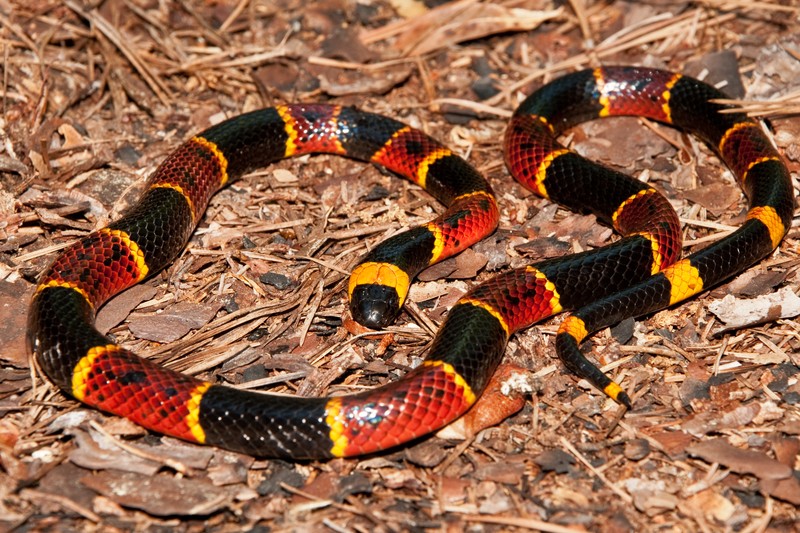
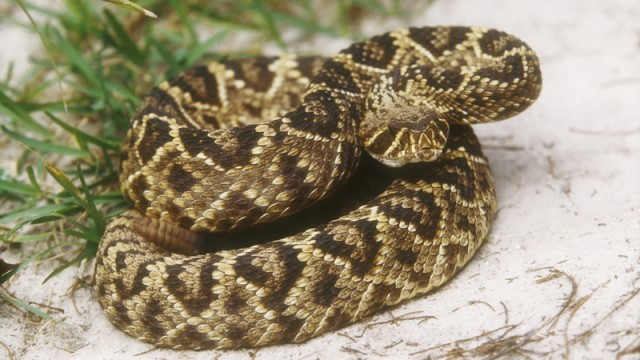
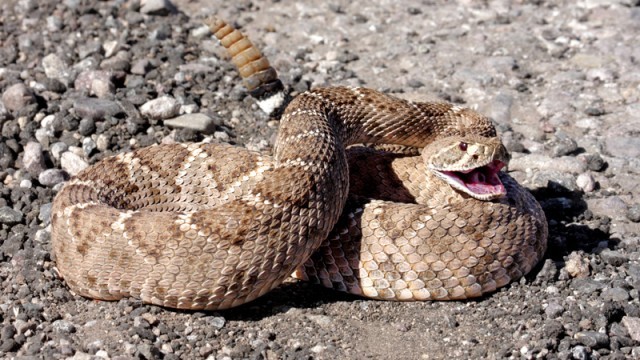
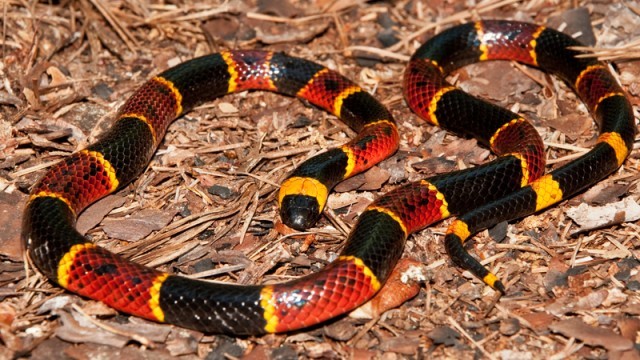
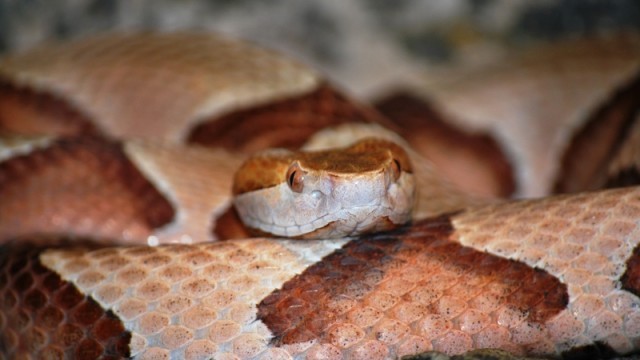
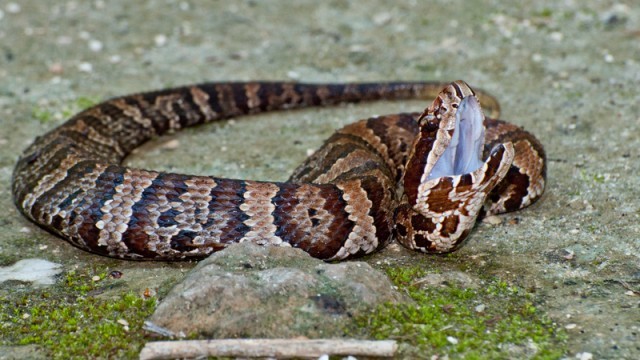
Except the picture of a coral snake isn’t a coral snake…. Fail…. Unfollowing
Yeah, seriously. I caught that too.
I’m out
Hey.. Idiots… That’s not a coral snake.
Red touch black, safe for Jack.
Red touches yellow, kills a fellow.
Yuk, keep them in Indy